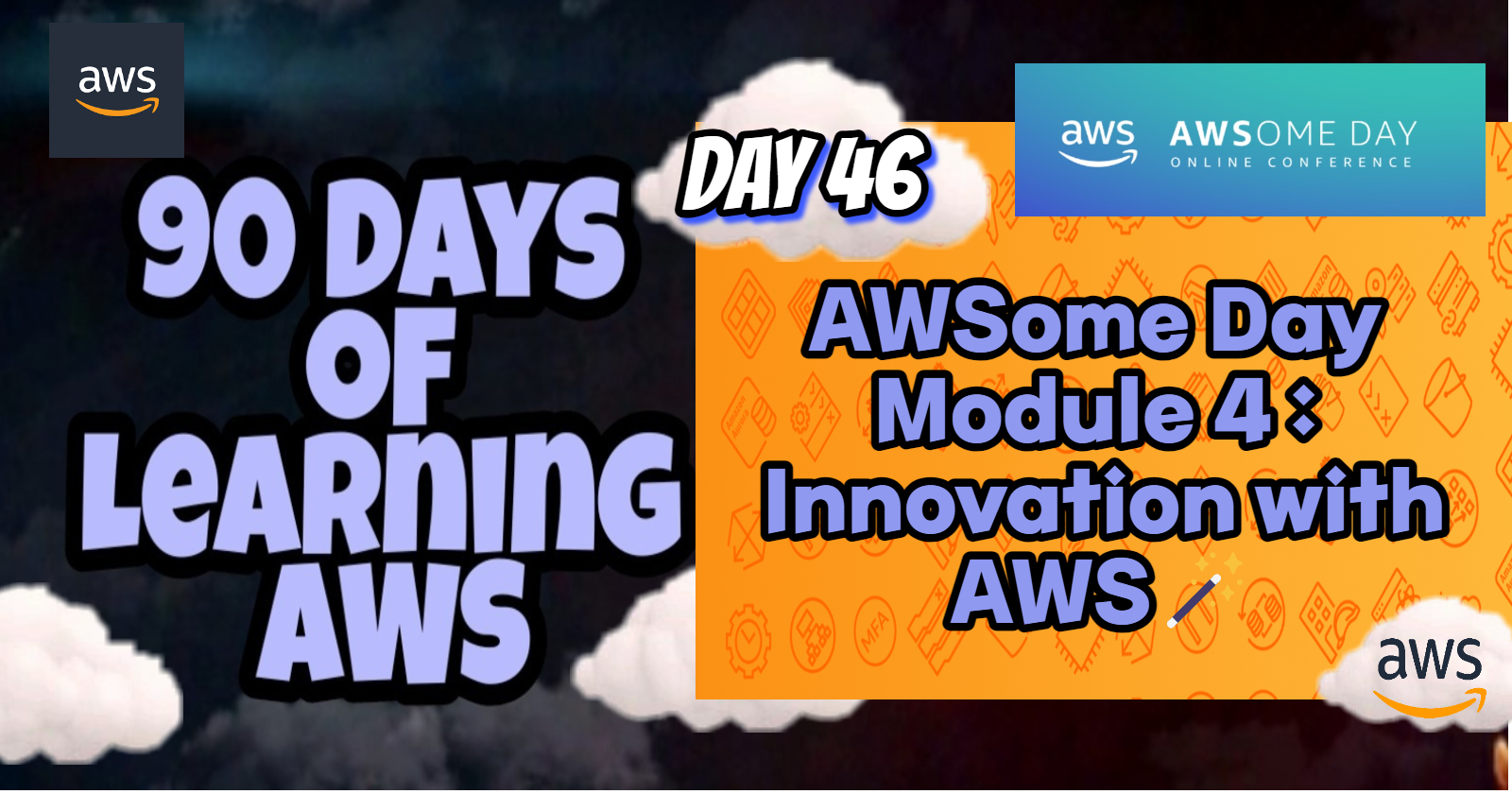AWSome Day | On-Demand - Module 4 - Innovation with AWS🪄
 Shailesh
Shailesh
📢 Day 46 of 90 days of AWS learning challenge
Introduction
This module explores how AWS enables innovation through its wide range of services and features. It discusses how organizations can leverage AWS to accelerate their innovation processes and bring new ideas to market faster.🪄
Most Important Learning Highlights from Module 4✨
🔶AWS Innovation Culture: AWS promotes a culture of innovation by encouraging experimentation and agility. This allows organizations to quickly develop and test new ideas without the constraints of traditional IT infrastructure.
🔶Machine Learning and AI: AWS offers a suite of machine learning and AI services like Amazon SageMaker and AWS AI services. These tools enable organizations to build intelligent applications that can predict outcomes, automate tasks, and enhance customer experiences.
🔶IoT Services: AWS IoT services, such as AWS IoT Core, make it easy to connect devices to the cloud. This allows for seamless integration with other AWS services, enabling real-time data collection, processing, and analysis from connected devices.
🔶Serverless Computing: AWS Lambda allows you to run code without provisioning or managing servers. This enables rapid development and deployment of applications, reducing operational overhead and costs.
🔶DevOps on AWS: AWS provides tools like AWS CodePipeline and AWS CodeDeploy to support DevOps practices. These services help automate and streamline software development and deployment processes, enhancing productivity and reducing time-to-market.
🔶Big Data Analytics: AWS offers big data services like Amazon Redshift and Amazon EMR. These tools enable organizations to collect, store, process, and analyze large volumes of data efficiently, providing valuable insights for decision-making.
🔶Blockchain: AWS Blockchain services, such as Amazon Managed Blockchain, allow organizations to build and manage scalable blockchain networks. This helps in creating secure and transparent transaction records.
🔶Quantum Computing: Amazon Braket is a fully managed quantum computing service. It helps scientists, researchers, and developers to explore and experiment with quantum algorithms and hardware, pushing the boundaries of what’s possible with computing.
🔶AWS Marketplace: AWS Marketplace is a digital catalog with thousands of software listings from independent software vendors. It makes it easy to find, buy, and deploy software that runs on AWS, streamlining procurement and deployment processes.
🔶Global Infrastructure: AWS’s global infrastructure spans multiple regions and availability zones. This ensures high availability and low latency for applications and services, enabling global reach and reliability.
Examples and Case Studies
Case Study: An automotive company uses AWS IoT services to connect and manage its fleet of connected vehicles. This provides real-time diagnostics and maintenance alerts, improving operational efficiency and vehicle safety.
Example: A financial institution utilizes AWS machine learning services to detect fraudulent transactions. This enhances customer security by providing real-time fraud detection and prevention capabilities.
Conclusion💡
Module 4 was truly exciting, showcasing AWS's potential in driving innovation. Learning about AWS's machine learning, IoT, serverless computing, and blockchain services highlighted their role in creating cutting-edge solutions. AWS's comprehensive tools empower us to bring innovative ideas to life and drive impactful projects forward.
Stay tuned for more AWS insights!!⚜ If you found this blog helpful, share it with your network! 🌐😊
Happy cloud computing! ☁️🚀
Subscribe to my newsletter
Read articles from Shailesh directly inside your inbox. Subscribe to the newsletter, and don't miss out.
Written by

Shailesh
Shailesh
As a Solution Architect, I am responsible for designing and implementing scalable, secure, and efficient IT solutions. My key responsibilities include: 🔸Analysing business requirements and translating them into technical solutions. 🔸Developing comprehensive architectural plans to meet organizational goals. 🔸Ensuring seamless integration of new technologies with existing systems. 🔸Overseeing the implementation of projects to ensure alignment with design. 🔸Providing technical leadership and guidance to development teams. 🔸Conducting performance assessments and optimizing solutions for efficiency. 🔸Maintaining a keen focus on security, compliance, and best practices. Actively exploring new technologies and continuously refining strategies to drive innovation and excellence.